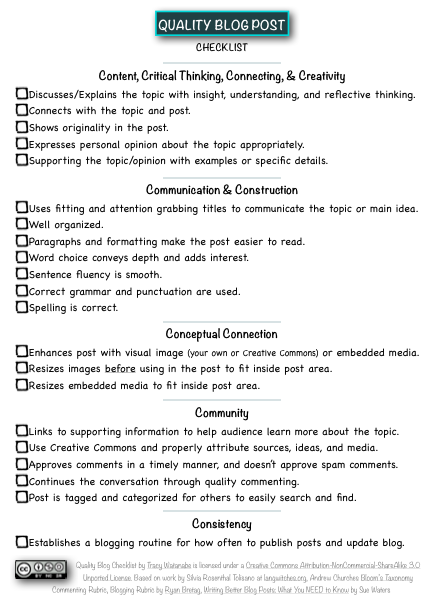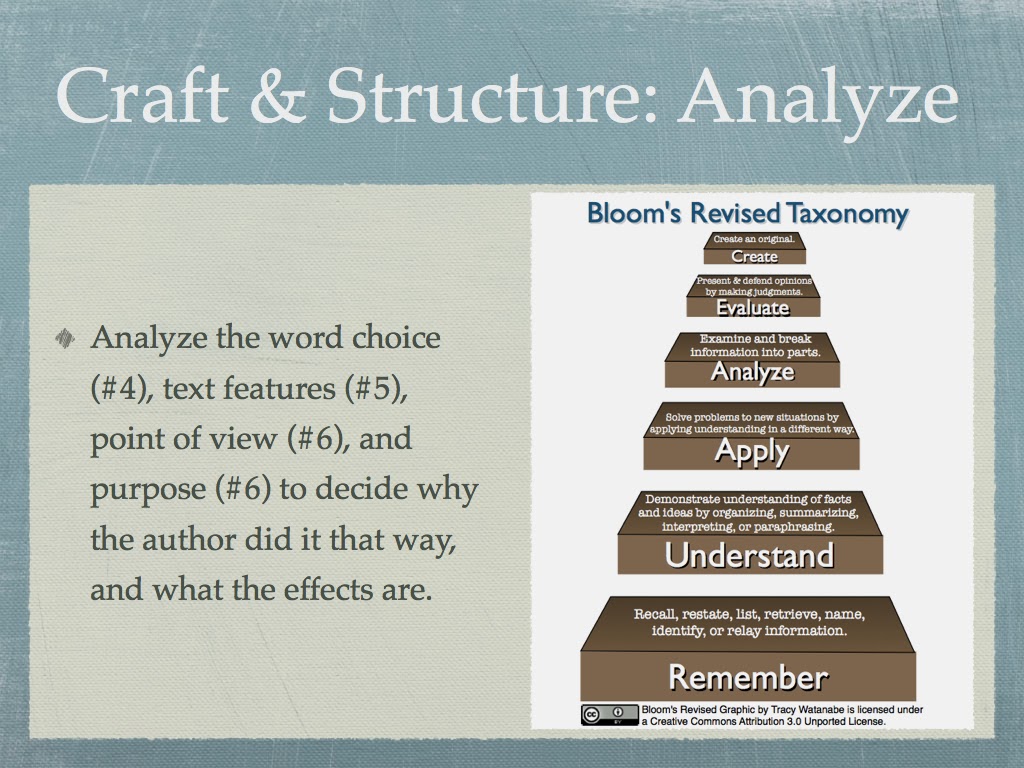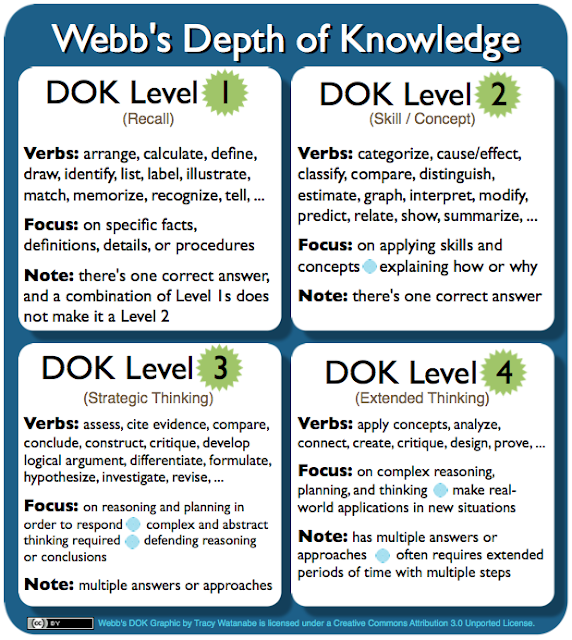Student Portfolios, Diigo and Blogs
Portfolios are collections of student work/artifacts that represent the process and progress of their learning. Typically the stronger artifacts document reflection and feedback. Some of the artifacts in the portfolio are then selected to present to others, such as at a parent-teacher conference.
Collecting, reflecting, and selecting to share with others is what makes portfolios extremely valuable. I like the visual that Silvia Rosenthal Tolisano created to show the three steps of curating a digital portfolio.
| Creative Commons: Silvia Rosenthal Tolisano/Langwitches |
What Could a Digital Portfolio Look Like?
I appreciate Implementing ePortfolios? Questions to Consider, and have used it to funnel my thinking for what the digital portfolio could look like.
I'm at a comfort level now where I don't limit students to certain tools. I allow them to use whatever they believe will be most effective for their purpose. Therefore, in thinking about how I'd have them collect their digital creations, especially if they are created all over the web, I need something that is easy to collect, easy to have dialogue or post reflections, and easy to share. With that, there are two fits that I believe would be the easiest for me.
Diigo for Digital Portfolios
Using my Diigo Educator's Account, I'd set up my students in my class. Some steps to walk through are:
- Bookmarking and tagging using tags that I've pre-created. (Click here to read more about folksonomy vs. taxonomy). For example, I use "AJUSD" for things related just to my district, and now it is easier to retrieve as well. I might have my students label their portfolio selection as, "mE-Portfolio." So, there would be class/assignment tags and tags for the portfolio.
- The class would have to learn how to leave constructive comments for one another, and practice digital citizenship.
- Dialogue and reflection on the bookmarks is easy in Diigo through comments and/or annotations.
Blogging with Students
The other route I'd use for portfolios is blogging. I'd start with one class blog and would place student names in categories and the assignments in tags/labels. From here, students can share and reflect from within the blog. They can comment and leave the URL to what they've created (or use a Google Form to collect the URLs), or I could dedicate a new page on the blog to showcase their projects.
For their portfolio piece, they can create a new presentation such as a digital story to share their overall reflection of their growth. Eventually, students can graduate from the class blog to earning their own blog, at which point, their portfolio would truly be their own.
There are many ways to create digital portfolios, and what I've written about is what would be easiest for me. Please help me think through this more.
- What are your thoughts about using Diigo, blogs and portfolios?
- How would you create student portfolios?
- What questions do you have?
- What have I missed?
 |
| Hootsuite for iPhone |
Continued thanks to Edublogs for their Teacher Challenges. I love building PLN through all @edublogs does!



Tracy, This is a fantastic way to think of portfolios because it allows students the freedom to share all of their work, even if it isn't done in school. Through the Diigo bookmarking and blogging, students can collect their work in lists (like categories), select ones to reflect on in a blog, and maintain shared groups, one for peer/teacher feedback and one for presentation and sharing. The blog can announce new additions to their curated group to share. I had been developing a Google Site template, but your idea makes it so much easier. I think the hardest part will be to develop tags and categories so their portfolio work will be easy to find for them and for those they share it with. I hope you continue to share how this project develops. Sheri
ReplyDeleteThanks Sheri!
ReplyDeleteI was trying to think of something the students could take ownership of and use in multiple classrooms, and possibly beyond the school year. I also wanted something that would be part of my normal routine.
I agree, the tagging would be the most difficult. Vicki Davis, on her Cool Cat Teacher blog has posted quite a bit about this. I see it as an opportunity to discuss with the students the tags and get their input. It would be a collaborative effort, would get their buyin since they can voice their opinion, and would model how to do this on their own. To me, that's a win-win.
Thanks so much for helping me think more about this!
Kind regards,
Tracy
Hi Tracy! I just finished outlining a lesson plan for using Google Sites for student digital portfolios. My focus was more narrow, though; I planned on using them just to collect and share student writing. I never thought of using Diigo to collect the projects they create using online tools---great idea! I like your comment about not limiting students to one tool. I'm thinking of creating a choice board featuring different Web 2.0 tools for certain projects, in the hope that students will try out different ones to see what works best for them.
ReplyDeleteThank you for your insights!
Shauna
Hi Shauna! Thanks so much for your thoughts here! I like your idea of choice boards for web 2.0. I once put an example in our forum, and I remember Tawnya Olen working on one, and Brenda Farris has a book for you/your school with some examples (DI with Tech -ISTE). It's such a great idea.
ReplyDeleteLast year I was able to use two choice boards with 4th graders in science. If they had done a choice board like one you've described, there would probably be more variety on a free to choose the tool type of board. Great thinking!
Kind regards,
Tracy
Tracy,
ReplyDeleteThis post gave me much to think about. I want to do portfolios with my students, but I was not sure how to start. This gave me a good starting point. All of your suggestions are great alternatives for my students to explore when creating portfolios.
I guess one of my questions is how you set up the parameters for the portfolio. As an English teacher, I know what I want my students to be able to show me, but I worry that I will micromanage what they put into it. I want to make sure that they have freedom, but also demonstrate their abilities.
I also wonder about management using Diigo. How do I deal with 160 students sharing their portfolios with me through Diigo? I know that there is probably an easy way and I am just overthinking it.
Finally, I know that you've used LiveBinders. Do you think that it would be a good option? I haven't messed around with it enough, but it seems like students could keep a variety of artifacts for a portfolio.
Thank you for this post. It has come at a most opportune time.
Have a great day!
Elizabeth
Fabulous questions, Elizabeth! I have answers for you, but think it will be easier to respond with visual examples to conceptualize... I will do that for my next post. Thanks for the inspiration for that! :-)
ReplyDeleteTo quickly answer though, I think it will be easier to manage in Diigo or an Edublog blog because you could organize to view all the particular assignments at once by class (based on tags), or you could view by individual student; which is something that couldn't be done if it were in a Livebinder or Google Site. I'll explain more in my next post.
Thanks, Elizabeth, for asking the big questions here! I love it!
Kind regards,
Tracy
Great post. I am also moving to eportfolios for my high school chemistry students. The purpose of the portfolios will be to have students gather and present evidence to support/refute claims (including but not limited to claims about their competency i.e.grades).
ReplyDeleteI've settled on using Evernote for the collecting and reflecting "working portfolio" and will leave the presentation tool up to the students (Prezi, Googlesites, pdf, etc.)
Reasons for Evernote include the ease of getting stuff into it from almost anywhere (including smartphones and email), notebook (folder) sharing capability, and tagging/searching ease.
Thanks,
@TimWatters
Hi Tim,
ReplyDeleteThanks for reminding me of those resources! I've heard ePortfolios are fabulous, but has a fee. I've also recently learned about Evernote and heard great things about it. I hadn't thought about using that as part of the presentation for the portfolio. Thanks for including that!
Kind regards,
Tracy
I loved reading your blog and the comments which followed! This month I am working my way through the Teacher PLN Challenge and just finished Step 7 on using Diigo. So far, I don't quite get it all. But inspite of this road bump feel like I am learning a lot and it will be all worth it.
ReplyDelete